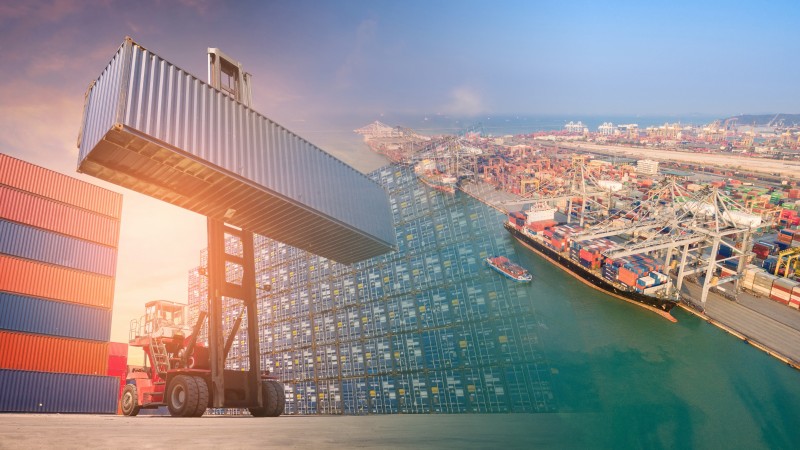The original version of this article is first published on East Asia Forum on July 28, 2020.

Against a backdrop of trade tensions, disruptions from the COVID-19 pandemic, and a global recession, global value chains (GVCs) are being tested like never before. This is raising uneasy questions for Asian economies.
Three key forces will shape the reconfiguration of GVCs in Asia over the coming years. First, production activities will move outside China as US-China rivalry continues to intensify. Tariffs and other economic sanctions imposed by the United States will lead many firms — including Chinese ones — to shift production from China to other Asian countries, especially ASEAN countries.
Over the past decade, many ASEAN countries have upgraded their technological capacity and human capital as the region pursued a manufacturing-led export growth strategy. This has put them in a good position to move up the production value chain in anticipation of the Fourth Industrial Revolution. They are now ready to receive new investments from China and elsewhere.
Second, the COVID-19 pandemic has renewed the region’s emphasis on diversification and resilience — even if this may create some inefficiencies and a moderately slower growth rate for a couple of years as factories, suppliers and workers adapt.
Countries and businesses will look to reduce their vulnerability to production and supply-side shocks, including widespread value chain disruptions brought on by the pandemic. But since complete self-sufficiency is virtually impossible, the answer lies in greater diversification. Whether it is for critical products or key manufacturing components, diversifying sources of supply while maintaining an adequate stock of reserves is the surest and most cost-effective way to prevent supply disruptions.
Third, technology is needed for growth and resilience. Despite the current landscape, the global shift to a technology-driven ‘new economy’ will continue. As economies become more advanced, capital and labor returns will diminish and the premium on innovation and creativity will increase.
As services become critical enablers of manufacturing and drivers of growth and employment, the ability to apply technology to create new products and services will determine competitiveness. Technologically-ready countries will be able to respond to and manage disruptions more smoothly and at a lower cost. Indeed, despite lurking cybersecurity threats, the pandemic has accelerated the adoption of digital technology and the shift to the new economy.
Several threads in this unfolding story are reminiscent of developments in Asia after the 1985 Plaza Accord. Will we see history repeat itself? Yes and no.
The parallels are uncanny. The development of regional supply chains in the 1980s and 1990s was a result of the Plaza Accord. The agreement led to a sharp appreciation of the Japanese yen, causing Japanese manufactured products to be uncompetitive. To improve their cost competitiveness, Japanese multinational corporations shifted the more labor-intensive components of production to ASEAN countries, where labor costs are lower, leading to the development of the regional supply chain.
Similarly, today’s US-China trade tension has led to tariffs on Chinese imports to the United States, eroding their competitiveness. This could trigger a relocation of production out of China to the ASEAN countries to avoid the tariffs. Concern over supply disruption due to the concentration of production in China has expedited this process.
But there are some differences to the plot this time. Alongside ‘Factory Asia’, ‘Shopper Asia’ has come on strongly as domestic demand is increasing across the region. And Asia is also expanding its linkages with other economies across the world.
The region’s rapid income catch-up has created a large middle class. Its increasing affluence means that Asia is now a key source of demand for goods and services produced regionally and globally. The region is no longer just producing goods for export to the West — it has become the largest consumer market for its own products and other global products.
Asia will become more integrated over time as the regional supply chain grows stronger and as demand for intra-regional trade in goods and services increases. The pre-COVID-19 boom in the tourism industry, for example, was fuelled by the region’s rapidly growing middle class. So is the growth in demand for high-end electronic products such as smartphones, drones, online gaming, and smart appliances.
The region is also working tirelessly to unlock new sources of growth by leveraging existing linkages — and building new ones — with emerging market economies in South Asia, the Middle East, Latin America, and Africa. Free trade agreements, bilateral investment treaties, and broader economic partnerships are being discussed and forged.
Asian countries recognize the need to upgrade their productive capacity, both by improving their technology base and human capital and by increasing connectivity among countries. To support this strategy, they are building infrastructure to facilitate cross-border production and trade and enhancing connectivity to support digital technology.
Some countries focus more on boosting competitiveness in areas where they have a solid base. Other countries diversify by forming new synergies between related industries and creating comprehensive ecosystems to support a network of industries.
Most importantly, the region realizes the need to achieve compatibility between regional integration and globalization. There is a strong awareness that greater resilience to supply and demand shocks cannot be achieved by being entirely ‘self-sufficient’. When some nodes in the cross-border production networks are choked, other nodes are activated. When some export markets suffer shocks, the global marketplace is there to provide buffers.
Globalization is here to stay — and Asia continues to be one of its strongest advocates.
